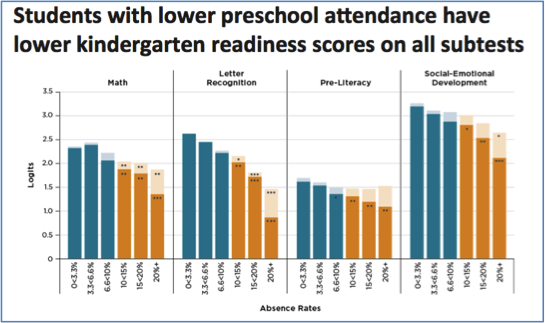What is Chronic Absence?
Attendance Works defines chronic absence as missing 10 percent or more days of school for any reason—meaning an excused or unexcused absence. That is as few as two days per month!
It turns out that attendance matters as soon as early childhood education programs, even in high quality programs. Research from Chicago shows that preschoolers who miss 10 percent or more of the school year (or just 2 days per month)—in excused or unexcused absences—arrive at kindergarten with lower levels of school readiness. Chronic absence—especially if it persists from preschool into the early grades—is a proven early warning that children are off track for reading proficiently by the end of third grade, a pivotal point for children’s success in school.
Absenteeism affects all children but its impact intensifies among children whose families lack the resources to make up for lost time. Read what research tells us in this summary. Find more studies about chronic absence in preschool on our Early Education Research page.
Many, if not most, of the missed days in preschool are excused absences called in by families. Some are clearly unavoidable: Young children get sick, especially when they first start school. Other absences occur because families face real barriers, whether it’s a chronic health problem, a sudden move to a new home or transportation issues such as a broken-down car.
